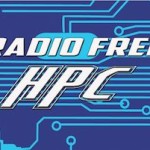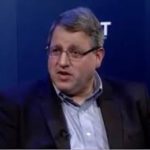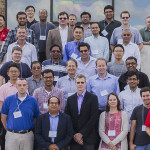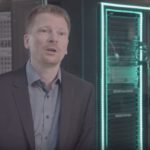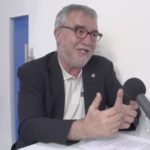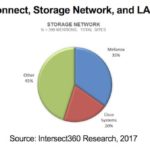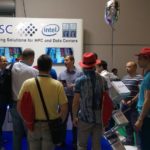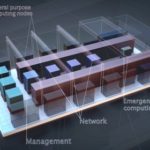In this podcast, the Radio Free HPC team looks at Dan’s recent talk on High Performance Interconnects. “When it comes to choosing an interconnect for your HPC cluster, what is the best way to go? Is offloading better than onloading? You can find out more by watching Dan’s talk from the HPC Advisory Council Australia conference.”
Dell EMC Supercomputer to Power OzGRav Studies of Black Holes
Today Dell EMC announced it will build a supercomputer to power Swinburne University of Technology’s groundbreaking research into astrophysics and gravitational waves. “We will be looking for gravitational waves that help us learn more about supernovas, the formation of stars, intergalactic gases and more,” said Professor Bailes. “It’s exciting to think that we as OzGRav could make the next landmark discovery in gravitational wave astrophysics – and the Dell EMC supercomputer will allow us to capture, visualise and process the data to make those discoveries.”
Podcast: 18 Petaflop Stampede 2 Supercomputer Powers Research at TACC
In this Texas Standard podcast, Dan Stanzione from TACC describes Stampede2, the most powerful university supercomputer in the United States. “Phase 1 of the Stampede2 rollout, now complete, features 4,200 Knights Landing (KNL) nodes, the second generation of processors based on Intel’s Many Integrated Core (MIC) architecture. Later this summer Phase 2 will add 1,736 Intel Xeon Skylake nodes.”
OSC Hosts fifth MVAPICH Users Group
A broad array of system administrators, developers, researchers and students who share an interest in the MVAPICH open-source library for high performance computing will gather this week for the fifth meeting of the MVAPICH Users Group (MUG). “Dr. Panda’s library is a cornerstone for HPC machines around the world, including OSC’s systems and many of the Top 500,” said Dave Hudak, Ph.D., interim executive director of OSC. “We’ve gained a lot of insight and expertise from partnering with DK and his research group throughout the years.”
Video: HPE Powers 1 Petaflop QURIOSITY Supercomputer at BASF
“In today’s data-driven economy, high performance computing plays a pivotal role in driving advances in space exploration, biology and artificial intelligence,” said Meg Whitman, President and Chief Executive Officer, Hewlett Packard Enterprise. “We expect this supercomputer to help BASF perform prodigious calculations at lightning fast speeds, resulting in a broad range of innovations to solve new problems and advance our world.”
18 Petaflop Stampede2 Supercomputer Dedicated at TACC
Stampede2 is the newest strategic supercomputing resource for the nation’s research and education community, enabling scientists and engineers across the U.S., from multiple disciplines, to answer questions at the forefront of science and engineering. “Building on the success of the initial Stampede system, the Stampede team has partnered with other institutions as well as industry to bring the latest in forward-looking computing technologies combined with deep computational and data science expertise to take on some of the most challenging science and engineering frontiers,” said Irene Qualters, director of NSF’s Office of Advanced Cyberinfrastructure.
Intersect360 Research Site Census Looks at HPC Interconnects
“Intersect360 Research has posted an Executive Summary of their most recent HPC User Site Census on Interconnect Suppliers. The report provides an examination of the server interconnects and network characteristics found at a sample of HPC user sites. Intersect360 Research surveyed a broad range of users about their current computer system installations, storage systems, networks, middleware, and software supporting these computer installations.”
RSC Group from Russia Brings Hot Water Cooling to HPC
Last week at ISC 2017, the Russian RSC Group showcased its ultra high-dense scalable and energy efficient RSC Tornado cluster solution as well as a full set of components for modernizing HPC systems to become 100% hot liquid cooling. “The RSC Tornado is based on 72-core Intel Xeon PhiTM 7290 processor has established the world computing density record for x86 architecture in 1.41 Petaflops per cabinet or over 490 Teraflops/m3.”
Lenovo Powers World’s Largest Skylake Cluster at Barcelona Supercomputing Center
Today Lenovo announced the deployment of the world’s largest, next-generation Intel-based Supercomputer at the Barcelona Supercomputing Center (BSC). The 11.1 petaFLOP1 Supercomputer called MareNostrum 4, will be housed in the world’s “most beautiful data center”at the Chapel Torre Girona at the Polytechnic University of Catalonia, Barcelona, Spain, and will be used to power diverse science from human genome research, bioinformatics and biomechanics to weather forecasting and atmospheric composition. This new system, which will continue to grow over time, is listed at #13 on the latest TOP500 list that was released this week. “The fast delivery, installation and optimization of the MareNostrum 4 system at BSC, showcases Lenovo’s end-to-end, high-performance computing strength,” said Kirk Skaugen, President of Lenovo Data Center Group. “Building on our 25 years of history in x86 server computing and our number one position in x86 server customer satisfaction and reliability, our goal at Lenovo is to be the largest supercomputing company on earth helping solve humanities biggest challenges through the rapid advancement of technology and innovation.”

